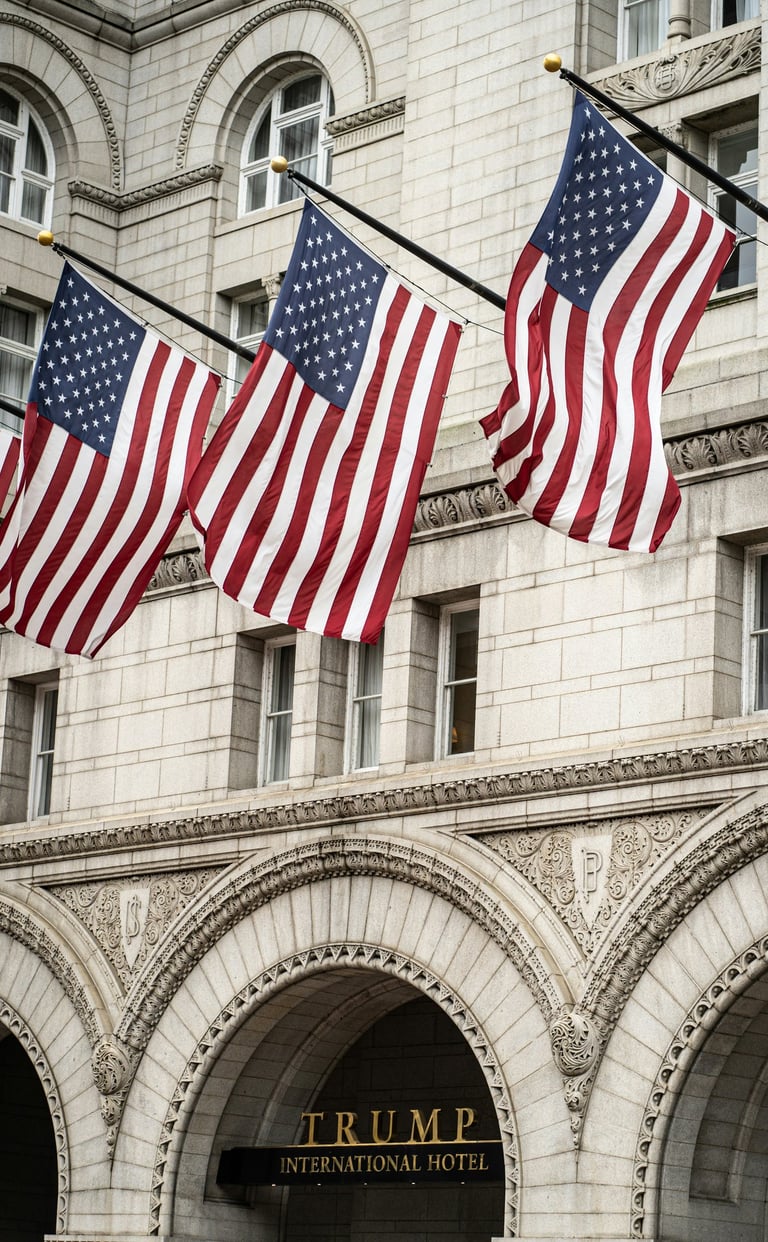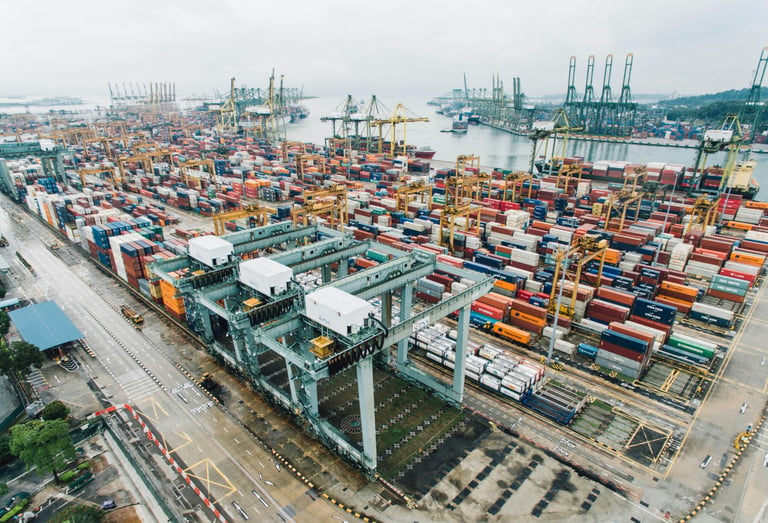

The global economic landscape has been thrown into renewed uncertainty as President Donald Trump intensifies his “America First” trade agenda in his second term.
Navigating Trump 2.0
With proposals to apply 25% tariffs on steel and aluminum, automobile, semiconductor and pharmaceutical imports, with no exceptions or exemptions, together with reciprocal and possibly universal tariffs as well as select tariffs on certain countries, Trump has sent shockwaves through global markets.
For Singapore, these measures threaten to disrupt established trade flows and supply chains. As China implements retaliatory tariffs targeting U.S. goods and services, and companies scramble to reorganize their supply networks, Singapore’s position as a key trade hub faces both unprecedented challenges and strategic opportunities.
This article examines how Singapore organisations can navigate these challenges and provides actionable strategies for board directors to build organisational resilience in an increasingly volatile world.
Singapore's strategic role in global trade
Singapore’s unique position as a global trade hub offers distinct advantages but also exposes it to external shocks.
As the only ASEAN country with a bilateral Free Trade Agreement (FTA) with the United States—the US-Singapore FTA (USSFTA)—Singapore has enjoyed tariff-free access to U.S. markets since 2004. Bilateral trade has since tripled to US$131 billion annually, according to "The American Business Presence in Singapore" by AmCham Singapore on May 2024.
However, the same report stated that Singapore’s trade-to-GDP ratio of over 311% underscores its exposure to external shocks. Unlike regional peers competing in mass manufacturing, Singapore’s vulnerabilities stem from its role as a high-value manufacturing hub and regional headquarters for over 5,700 U.S. firms.
"The US-Singapore trade interdependence, while historically advantageous, now exposes Singapore-based companies to heightened risks from escalating trade tensions."
According to the US Department of Commerce in August 2024, the U.S. remains Singapore’s largest source of foreign direct investment (US$424 billion in 2023), while Singapore is the third-largest Asian investor in the U.S., with S$57 billion in direct investments as of 2022 and over 200 Singapore companies operating across 40 U.S. states.
Strategic risk management framework
To navigate these uncertainties effectively, board directors must adopt a proactive and forward-looking approach to risk management that aligns with their organisation's specific industry and circumstances.
The Strategic Risk Management framework begins with a comprehensive multi-dimensional exposure assessment of potential exposures, where boards map their organisation's vulnerabilities across trade flows, supply chains, foreign currency exposures, and geopolitical risks.
To better understand the potential impact and nuances of how an organisation may be affected, this risk assessment must consider 1st, 2nd and 3rd order impacts across multiple dimensions, similar to how electronics manufacturers analyse tariff effects on component costs while evaluating compliance risks tied to origin verification.
For example, a three-level exposure assessment on Singapore could look like the following:
First Order Impact: Direct Trade Exposure
Singapore’s electronics sector is particularly exposed. Accounting for US$13.17 billion - or 30% - of exports to the U.S., this sector faces acute risks under Trump’s proposed 25% tariff on semiconductor chips, potential universal baseline tariffs (10–20%) and China-specific duties (10%). Companies like Venture Corporation Ltd and Flex Ltd face heightened risks from potential tariff impositions on key components due to their extensive operations in both China and the U.S.
Other sectors at risk include machinery (21% of exports) and medical apparatus (13%) and also pharmaceutical exports to US at US$1.3 billion (3%) are also at risk.


Second Order Impact: Supply Chain Disruptions
Beyond direct trade exposure, Trump’s policies create cascading effects on supply chains. Many Singaporean manufacturers rely on components imported from China or other ASEAN countries before exporting finished products to the U.S. The new tariffs exacerbate existing tensions in these supply chains.
Singapore companies most exposed to 2nd order supply chain pressures include those importing raw materials from 'unfavored' countries and providing input materials and/or intermediate goods for Chinese (or other tariffed countries) manufacturers exporting final products to the US.
This includes Singapore companies with manufacturing and operations in other countries that could potentially be affected by tariffs or US restrictions on AI chip exports, for example, semiconductor chip manufacturing and data centers in Malaysia. Singapore listed companies such as Keppel DC REIT, Frencken Group and UMS Holdings could potentially be impacted.
Analysts estimate the new US-China tariffs could reduce Singapore's growth rate by at least 1 percentage point.


Third Order Impact: Broader Economic Contagion
Even companies not directly involved in U.S.-China trade are likely to be affected by 3rd order impacts through reduced global demand and slower economic growth. Over 70% of Singapore’s GDP are in services-related sectors with over 20% contributed by manufacturing – all of which will be impacted by a slowdown in global trade and growth.
Already, Singapore's Purchasing Managers’ Index (PMI) dipped 0.2 points in January to 50.9, down from December's 51.1 points, indicating slowing manufacturing growth. The Ministry of Trade and Industry (MTI) has revised Singapore’s GDP growth forecast for 2025 downward to 1–3%, compared to an estimated 3.5% in 2024. The Monetary Authority of Singapore (MAS) has eased monetary policy, citing slower growth momentum, while financial institutions face increased volatility as the U.S. dollar strengthens against regional currencies.
OCBC estimates the new US-China tariffs could reduce Singapore's growth rate by at least 1 percentage point, while Morgan Stanley projects that Singapore’s GDP growth will slow to 1.5 per cent in 2025.
“Singapore-Washing” Risks
Scrutiny over “Singapore-washing,” where products originating from China are routed through Singapore to bypass U.S. tariffs, has emerged as a critical risk for companies operating across these markets. This issue gained prominence when Nvidia chips were allegedly procured illegally by DeepSeek in Singapore.
Given that China remains both Singapore’s largest import and export market—with 53% of imports comprising electrical equipment and machinery—more stringent application of Chinese origin rules could inadvertently impact Singaporean firms exporting similar goods to the U.S., where 50% of Singapore’s top exports also consist of electrical equipment and machinery.
Applied Materials’ recent investigation by U.S. authorities over shipments involving China’s largest chipmaker SMIC underscores the importance of robust compliance frameworks and origin verification systems in safeguarding against reputational damage.
Developing a Strategic Response
Strategic responses should then be tailored to the organization's context. Even financial institutions who may not be directly impacted should review their credit or investment portfolios to have a better understanding of how much risk and exposure their portfolios are potentially exposed to. With a more nuanced and granular understanding of the potential risk (1st, 2nd or 3rd order impacts), this allows for the development of a more comprehensive risk mitigation strategy.
Depending on the company’s specific industry and circumstances, this could range from leveraging Singapore's extensive network of 27 FTAs to reduce tariffs and streamline customs procedures. Companies can consider adopting a "China+1" strategy, diversifying operations into ASEAN countries to reduce dependency on single markets while capitalising on regional trade agreements.
Companies can also leverage the Economic Development Board’s efforts in positioning Singapore as a critical supply chain management (SCM) hub amidst global shifts in trade flows. Companies such as Schneider Electric, 3M, Zuellig Pharma and Becton Dickinson have established regional SCM hubs in Singapore that integrate digital technologies such as automation, AI, and blockchain solutions.
Strengthening compliance frameworks and origin verification systems becomes essential to address regulatory requirements and mitigate reputational risks associated with "Singapore-washing."
Financial resilience and growth strategies form another critical component of the response framework. Boards should review working capital requirements, ensure sufficient liquidity buffers, and implement robust currency hedging strategies as well as explore new avenues of growth during periods of market volatility.
Lastly, boards need to ensure that their organizations implement a continuous monitoring and early warning system. Regular scenario stress tests ensure that potential impacts remain within the board's risk appetite while allowing organisations to adapt swiftly amidst shifting dynamics while allowing organizations to adapt swiftly amidst shifting dynamics.
Conclusion
Trump’s second-term trade policies present significant challenges but also opportunities for Singaporean companies willing to adapt and innovate. By leveraging Singapore’s unique position as a trusted hub for global trade and adopting resilient strategies such as those outlined above, firms can navigate disruptions effectively while positioning themselves for long-term growth.
For board directors, resilience lies not just in surviving disruptions but thriving amidst them—by fostering organizational agility and embracing forward-thinking strategies that ensure sustainable success in an increasingly volatile world.
Published by The Edge Singapore, February 24, 2025


